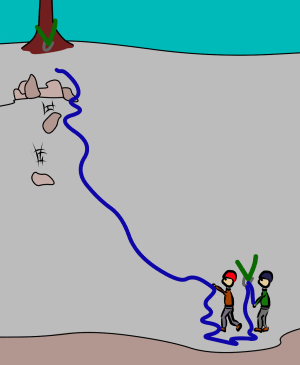Bad Anchors and Loose Rock, is part of the book - The Trad Climber's Guide To Problem Solving.

Poor abseil anchors are often found on seldom travelled multi-pitch descents or alpine ridge traverses. Sometimes there is no anchor where you need one, or the existing anchor is untrustworthy. It is your responsibility to fully inspect every anchor before you use it.
Never trust an anchor if you have any doubts about its reliability. Other options include:
- Belayed downclimbing
- Beefing up the anchor
- Backing up the anchor
Bad Anchors - Belayed Downclimbing
If the terrain is easy enough, it may be possible to downclimb. This means you don’t need to leave any of your own gear behind.
The leader climbs down first, placing gear as they descend. Once they reach an anchor (or the ground), they can belay the follower, who removes the gear on their way down.
The last climber must be careful as they will downclimb above gear which they didn’t place.
You will need some sort of anchor at the top to begin the descent. This anchor needs to be solid but can be fairly unsuitable for abseiling, such as a few cams which are widely spaced apart.
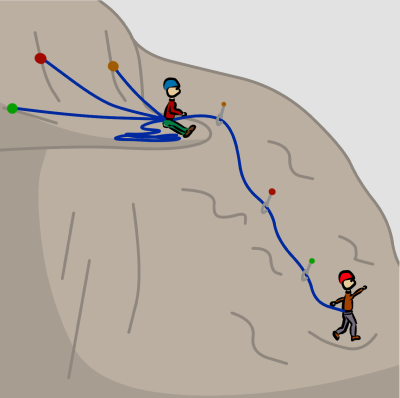
Bad Anchors - Beefing Up the Anchor
If you embark on a route which has a complicated descent, it is worth bringing ‘leaver’ slings, nuts and carabiners for beefing up anchors.
Poor anchors do not necessarily need replacing entirely. Often one extra piece equalized to the anchor will make it good enough. If you make a new anchor, be sure to remove any ancient gear that you replace so no-one uses it in the future.
Sometimes the anchor pieces are good, but the carabiner or maillon (quick link) at the main point is worn. This is a critical part, since it is the only thing connecting the rope to the anchor. Add another if you are unsure. If you leave a snapgate carabiner, make sure to tape the gate closed so it can’t unclip during your descent.
Sacrificing your expensive climbing gear to beef up an anchor is painful. But it’s not as painful as falling down a mountain after the anchor fails. Make sure it is bomber.
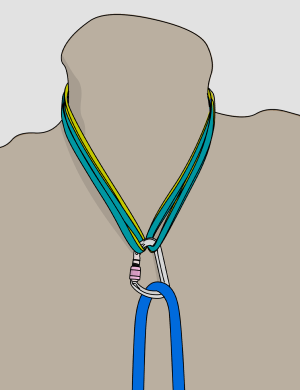
Bad Anchors - Backing Up the Anchor
If an anchor is okay but not completely bomber, you can add a separate backup to test it’s strength without fully committing to it. Your backup must be:
1) Connected in such a way which means it doesn’t hold any of the weight
2) Positioned appropriately for any potential direction of pull
3) Capable of holding the load should the initial anchor fail
The heaviest climber descends first with most of the gear or the heaviest bag. The second climber carefully watches the anchor for any signs of failure and then decides whether to leave the backup in place or to remove it and trust the original anchor alone.
The original anchor has not passed the test if the backup holds any of the weight. In this case, the backup should be left in place when the last climber descends.
If you’re not sure, just leave the backup there and enjoy a stress-free and safe descent.
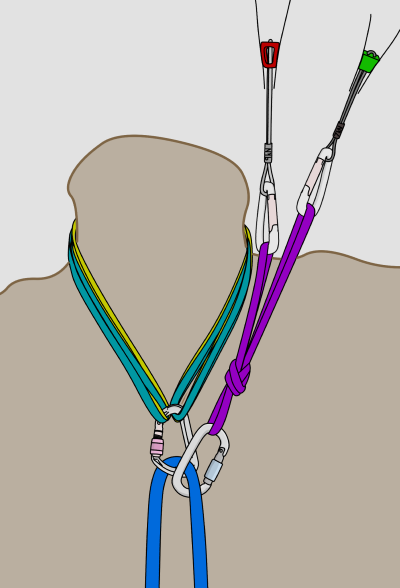
Reaching a Poor Anchor when Leading
If you reach a poor anchor after leading a pitch, you can use these techniques to get down safely.
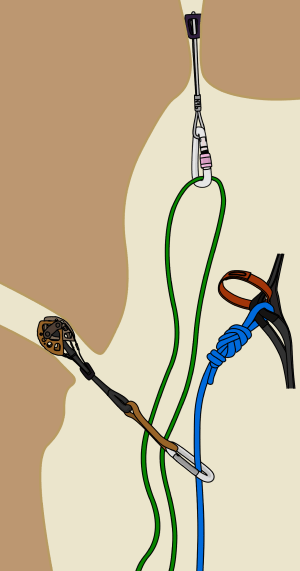
Descending Loose Rock
Abseiling down loose rock is a climber’s nightmare. Seek out other options (such as downclimbing or abseiling a different way) before committing to the abseil.
However, if you encounter a choss-pile in the middle of a multi-pitch descent, you can ‘zigzag abseil’ to reduce the chances of being hit by rocks when you pull your ropes.
Move sideways as you descend (pendulum or tension traverse) and make the next abseil anchor as far to one side as you can. This might mean leaving gear behind, but it puts you out of the line of rockfall when you pull your ropes.
